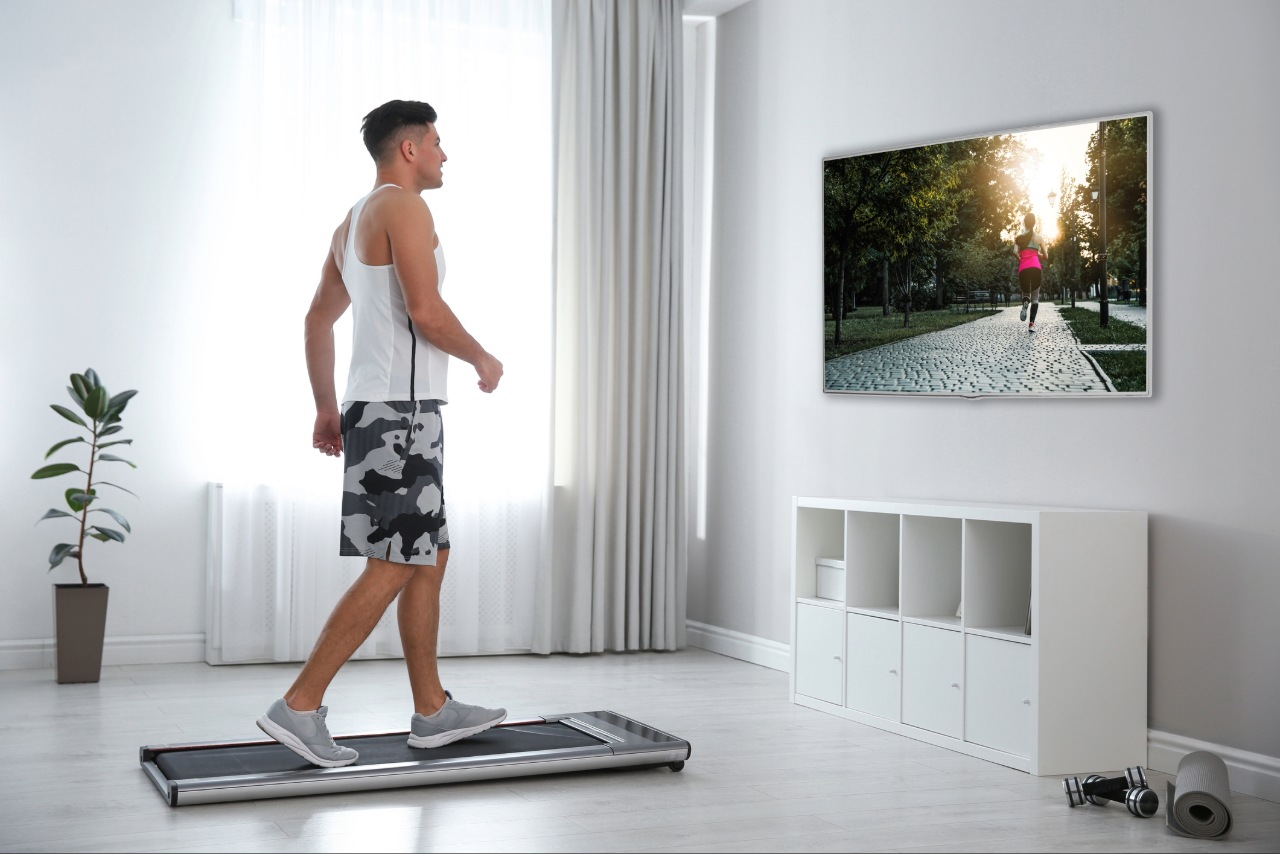Nothing (and we mean nothing) compares to that moment when you realize you’re a runner. That moment when you realize pounding the pavement is your jam. The speed, the focus, the competition with yourself, the want to improve, the PBs, community and Runner’s High – it’s all epic. Of course, it’s not all rainbows and butterflies because, well, there are certain common injuries every beginner needs to be aware of before all that euphoric progress gets halted in its tracks.
Yepp. Before you sprint into action, it’s time to navigate the most common running injuries that may try to crash your party. Don't worry, though, because we've got your back… and your knees, shins, ankles, and everything else. From diving into the 12 most prevalent running injuries for beginners to giving you some essential tips on how to avoid them, it’s time to lace up those shoes and dive right in.

Shin Splints
Starting Slow & Warming Up
For those who have never experienced the chronic nuisance that is shin splints, think of them like that annoying roommate who refuses to leave. But the reason they usually creep into your life is due to overdoing it too soon. Luckily, the key to sidestepping shin splints is simple: start your running journey at a comfortable pace and gradually increase your mileage. Make warming up a non-negotiable part of your routine, ensure your muscles are prepped for action, and commit to doing dynamic stretches like leg swings and calf raises, which can work wonders in keeping those shins in check.
Runner's Knee
Form Matters, Strengthen Smartly
Ah, the old runner's knee injury; the frenemy of many runners. To avoid this unwelcome guest, make sure you are focussed on maintaining proper running form. That means keeping your knees aligned with your feet during each stride, and do what you can to avoid overstriding, which will only put excess pressure on your knees. On top of that, try incorporating strength training exercises that target your quadriceps and hamstrings to provide stability and support for your knees. Remember, it's not just about the run; it's about how you run.
IT Band Syndrome
Show Some TLC to Your IT Band
The IT band is like the superstar of your outer thigh, but it can also be a real drama queen when it's not happy. So let’s try to keep it elated by avoiding that dreaded IT band syndrome. How? By prioritizing your post-run routine, which means embracing the power of stretching, focusing on your hips and glutes. You could also try exercises like clamshells and lateral leg raises to help keep your IT band balanced and happy. Trust us: your future runs will thank you.
Plantar Fasciitis
Love Your Feet with Supportive Shoes
How do we explain this one? Hmmm. Ah, got it. Plantar fasciitis will make it feel like you're walking on a bed of newly sharpened nails. Yeah, ouch! Thankfully, there is one very simple way to prevent this painful condition and that involves a bit of retail therapy to invest in some epic running shoes; the kind that have adequate arch support and cushioning. Moving forward, replace your shoes regularly to ensure they maintain their supportiveness. As for exercises, try things like toe curls and calf stretches to strengthen your foot muscles. After all, happy feet lead to happy runs.
Achilles Tendinitis
Build Mileage Gradually
Your Achilles tendon is that trusty running companion that makes PRs possible, but it can get a little grumpy if you push it too hard. So, to avoid Achilles tendinitis, try taking it easy on mileage increases by gradually building up your running distance and intensity, allowing your tendon to adapt slowly. Then start incorporating calf stretches into your warm-up and cool-down routines as a way to keep those Achilles happy and healthy.
Stress Fractures
Listen to Your Body & Cross-Train
Stress fractures are pretty much a runner's worst nightmare. Seriously. In fact, this injury can put you on the sidelines for weeks, to the point that the only run you’ll complete is a Netflix marathon. To steer clear of this situation (and those tiny cracks in your bones), listen to your body and avoid overtraining. You could even embrace cross-training activities like swimming or cycling to give your bones a break from pounding the pavement while maintaining your fitness level. Proper nutrition, including calcium and vitamin D, can also play a significant role in bone health. So, fuel up and take care of those precious bones. You’re gonna need them on side.
Blisters
Comfort is Key
Blisters may seem small, but they can be a real pain in the you-know-where. So, to prevent these pesky skin irritations, make sure you’re prioritizing comfort anytime you’re choosing some running gear. We’re talking about moisture-wicking socks that reduce friction and keep your feet dry, shoes that fit properly with enough room for your toes to wiggle comfortably, and applying an epic lubricant to any and all high-friction areas before your run, all of which will work wonders. Happy feet make for happy runs (oh, wait, we said that already).
Hamstring Strain
Warm-Up & Stretch Thoroughly
The hamstrings are one of the most essential muscles in the running game, so treat them with love and care, okay. That means avoiding the chance of hamstring strains, which is best done by celebrating the power of a good warm-up. It’s about preparing your muscles for action with dynamic stretches that focus on your hamstrings. Things like leg swings and hip circles, both of which will help make sure your hamstrings are ready to shine during your runs. Remember: a little warm-up can go a long way in keeping those hammies happy and injury-free.
Ankle Sprains
Watch Your Step & Improve Balance
Think of your ankles as the guardians of your stability. And now think of sprains as the only thing that can disrupt your balance. So, to prevent you from suffering any unwanted ankle sprains, always be mindful of the terrain you're running on, especially when taking on the trails. Watch out for uneven surfaces and potential hazards, gradually make your way up to the more technical terrains, and work on your balance by adding exercises such as single-leg stands into your training regimen. Strong and stable ankles can be your best friend in the running game.
Patellar Tendonitis
Don't Overdo It & Strengthen Wisely
The patellar tendon is basically the unsung hero of your knee joint, and it deserves some extra TLC in order to avoid patellar tendonitis. Luckily, the easiest way to do this is to listen to your body, stick to your personalized running plan and resist the temptation to overtrain. As for other strategies, try allowing your knees ample time to recover between runs, as well as incorporating strength training exercises for your quadriceps, which will help support your knees during your runs. Remember, a little prevention goes a long way in keeping your knees groovy.
Plantar Plate Tear
Arch Support & Rest
The plantar plate in your foot may not be the talk of the town, but it plays a pretty crucial role in your running journey. And when we say pretty we actually mean very, So, to prevent a tear in this structure, do what we’ve now said 1,789,469 times and invest in some running shoes that offer proper arch support. Then start prioritizing a decent chunk of rest between runs to allow your foot to recover fully. And don't forget to warm up before hitting the road.
Black Toenails
Shoes that Fit & Regular Trimming
Black toenails are a part of every runner’s journey, and a colorful souvenir you’ll no doubt collect from a few runs. But they're not a badge of honor you want to wear. No way. Okay, maybe a little. Still, the aim is to avoid having black toenails, which you can do by making sure your running shoes fit comfortably with plenty of room for your toes. Of course, there are other techniques you can enjoy, such as regularly trimming your toenails to avoid friction during your runs.
To Sum It All Up
Congratulations! You've successfully completed your crash course on navigating the most common running injuries for beginners, meaning you're now ready to take on your running adventure with more confidence and less unwanted souvenirs. Just remember: running is not just about the destination; it's about the journey and the joy you find in every stride. So lace up those shoes, take it at your own pace, and enjoy the thrill of the run while keeping injuries at bay.
Thanks for reading. For more running insights, inspirations, stories and techniques, follow us on Instagram to take your runs to the next level.
















.jpg)
